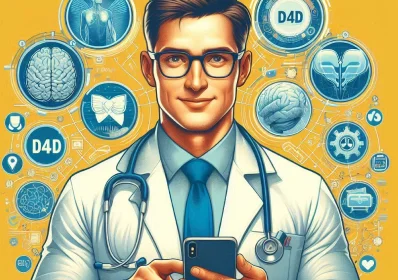How to Create a Mobile App-based Startup?

Introduction
In the era of ubiquitous technology, mobile apps have become an indispensable part of our lives, transforming not only personal interactions but also business landscapes. The proliferation of smartphones and tablets has fueled the growth of app-based startups, providing entrepreneurs with unprecedented opportunities to disrupt industries and cater to the evolving needs of consumers.
Creating a successful mobile app-based startup requires a comprehensive strategy that encompasses app development, market research, customer acquisition, and ongoing maintenance. This article will guide you through the essential steps involved in launching your own app-based startup, empowering you to leverage the mobile revolution and make a meaningful impact on the market.
What is Mobile App-based Startup?

A mobile app-based startup refers to a company or business that is primarily reliant on the use of mobile applications to provide products or services. Usually, these startups develop and launch their own unique mobile apps, which can be downloaded and accessed by users through their smartphones or other portable devices. These apps can offer a range of services such as e-commerce, social networking, gaming, productivity tools, and more. This type of startup focuses on leveraging the growing popularity and convenience of mobile devices in today's society to reach a wider audience and create innovative solutions for various industries. In short, a mobile app-based startup is an emerging business that utilizes technology to deliver its products or services directly to consumers' fingertips.
10 Key Steps to Launching a Successful Mobile App Startup
In today's competitive market, launching a successful mobile app startup requires meticulous planning and execution. Here are 10 essential steps to guide you through the journey:
Identify a Problem and Craft a Solution
Begin by understanding the specific problem your app addresses for users. Define the target audience, conduct thorough market research, and ensure there is a significant demand for your solution.
Build a Minimum Viable Product (MVP)
Focus on developing a basic version of your app with core features and functionality. This MVP allows you to test your concept with early users and gather feedback for improvements.
Create a Compelling App Experience
Design an intuitive and seamless user interface (UI) that is both visually appealing and easy to navigate. Pay attention to user experience (UX) principles to ensure a positive and engaging interaction.
Develop a Scalable Infrastructure
Choose a technology stack and cloud platform that can support your app's anticipated growth and usage. Consider factors such as scalability, security, and performance.
Set a Marketing Strategy
Develop a comprehensive marketing plan that outlines your target audience, messaging, distribution channels, and paid advertising campaigns. Leverage social media, app stores, and content marketing to promote your app.
Test and Iterate
Conduct rigorous testing throughout the development process to identify and address bugs, performance issues, and user feedback. Continuously improve your app based on user data and industry trends.
Establish Monetization Models
Determine how your app will generate revenue. Consider subscription fees, in-app purchases, advertising, or a combination of these models. Ensure that your monetization strategy aligns with the value you provide to users.
Build a Strong Team
Assemble a skilled team of developers, designers, marketers, and business professionals who are passionate about your vision. Foster a collaborative and supportive work environment to drive innovation and productivity.
Seek Funding (if necessary)
Depending on the scope and ambition of your project, you may need to seek external funding. Prepare a solid pitch deck, identify potential investors, and secure capital to support your growth.
Launch and Monitor
Once your app is ready, launch it on relevant app stores and monitor its performance closely. Track metrics such as downloads, user engagement, and revenue. Adjust your marketing and development strategies based on the data you collect to optimize your success.
The Step-by-Step Guide to Launching a Mobile App Startup

Launching a mobile app startup can be an exciting and rewarding endeavor, but it also requires careful planning and execution. Here is a step-by-step guide to help you navigate the process:
Step 1: Validate Your Idea
- Research the market: Identify a specific problem or need that your app will address.
- Build a prototype: Create a basic version of your app to test its functionality and user experience.
- Get feedback: Share your prototype with potential users and gather feedback on its features and design.
Step 2: Define Your Target Audience
- Identify your ideal user: Determine the demographics, interests, and pain points of the people who will benefit most from your app.
- Segment your audience: Divide your target audience into smaller groups based on their specific needs or characteristics.
Step 3: Design and Develop Your App
- Choose a development platform: Select iOS, Android, or cross-platform tools based on your target audience and technical requirements.
- Design your user interface: Create an intuitive and user-friendly interface that appeals to your audience.
- Develop your features: Implement the core functionality of your app, ensuring it meets the needs of your users.
Step 4: Test Your App
- Internal testing: Test your app thoroughly in-house to identify and fix any bugs or performance issues.
- Beta testing: Release a beta version of your app to a small group of users to collect feedback and make improvements.
Step 5: Launch Your App
- Create an App Store listing: Submit your app to the Apple App Store or Google Play Store.
- Market your app: Promote your app through social media, content marketing, and other channels.
- Monitor and iterate: Track your app's performance and user feedback to identify areas for improvement.
Step 6: Monetize Your App
- In-app purchases: Offer additional features or content within your app for a fee.
- Subscriptions: Charge a recurring fee for access to premium content or services.
- Advertising: Partner with advertisers to display ads within your app.
Step 7: Build a Team
- Hire key personnel: Assemble a team with the necessary skills and experience to support your app's development and growth.
- Define roles and responsibilities: Clearly establish the roles and responsibilities of each team member.
- Foster a collaborative culture: Create a positive and supportive work environment that encourages teamwork and innovation.
Step 8: Seek Funding
- Bootstrapping: Use your own funds or revenue to finance the development and launch of your app.
- Angel investors: Seek investments from individuals who believe in your app's potential.
- Venture capital: Raise funds from venture capital firms who invest in promising startups.
Also Read : How to Build a Minimum Viable Product in 2023 and Its Future Trends

Conclusion
Launching a mobile app startup is a complex but rewarding journey. By following the key steps—identifying a problem, developing a minimum viable product, designing an intuitive user interface, testing thoroughly, marketing strategically, and monetizing effectively—you can build a successful app that meets market needs and stands out in the competitive landscape. Continuous iteration and responsiveness to user feedback are essential for long-term success.
Innow8 Apps is your ideal partner in transforming innovative ideas into high-performing mobile applications. Our expert team offers comprehensive services, from app development and UX design to scalable infrastructure solutions. Whether you're starting from scratch or enhancing an existing app, Innow8 Apps delivers exceptional quality and tailored solutions to ensure your success. Visit Innow8 Apps to discover how we can help you launch and grow your mobile app startup.
FAQs
How do I identify a problem or need that my mobile app can solve?
Observe your own experiences and those of others, talk to potential users, research industry trends, and analyze existing solutions.
What are the essential features to include in a mobile app?
User authentication, intuitive navigation, problem-solving functionality, push notifications, and performance optimization.
How much does it cost to develop a mobile app?
Development costs can vary widely depending on factors such as app complexity, platform, and development team. Consider freelance developers, outsourcing, or hiring an in-house team.
How do I market my mobile app?
Leverage social media, content marketing, influencer outreach, app store optimization (ASO), and paid advertising.
Start building your mobile app startup today!
Recent Blogs:

How Much Does It Cost to Build an App like D...
Find out the cost to develop an app like D4D. Learn about key features and budget factors...
Read More
How AI Can Be Beneficial to Healthcare Startu...
Explore the potential benefits and opportunities AI offers for innovation and improved healt...
Read More
Cost of Developing a Sports Betting App Like ...
Discover the cost of creating a successful sports betting app like Fanduel . Learn about bud...
Read More